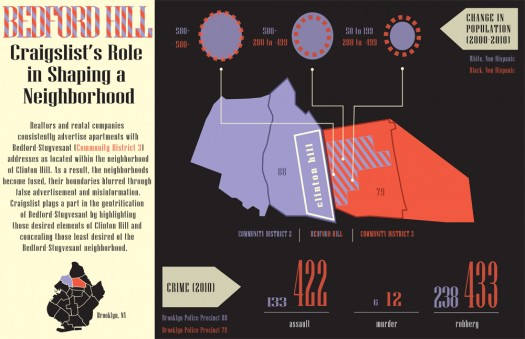This post from Urban Omnibus is a great introduction to mapping as a critical, social practice. It is a short interview with architect and educator Louise Harpman, who teachers a course on Mapping at NYU.
Why do you think mapping is important for students of the urban environment?
For a couple of reasons. Maps are primarily received as directional; a subway or bus map is understood as a tool to help you get somewhere. So, often I’ll start the course by looking at the New York subway maps over time, tracking, for example, the different depictions of Central Park in various versions of the map. Simply showing students the decisions that mappers made demonstrates how much information we accept uncritically, and how much images participate in forming our understanding of the world. How do we make sense of information and for what purposes? How do we promote or suppress ideas through representation? Very early in the course, we get into how ideology underlies maps.
Distinct from why mapping is important for your students, why do you think it is an important topic for designers and architects to engage?
The best design work comes out of a strong research base, which may rely on demographics, on use patterns, on flows of capital. And you can’t just write a report; you need to make that information visible. In the design world, we are so used to image production: plans, sections, elevations, aerial photographs. And yet we assume the neutrality of maps. I want students to understand what biases go into the production of an image, what is privileged, limited or excluded.
Read more here.
